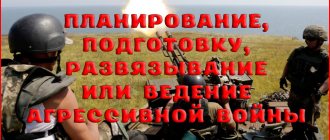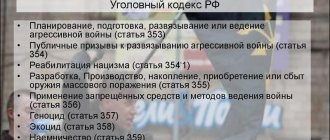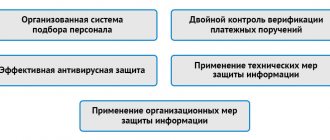1. Cruel treatment of prisoners of war or the civilian population, deportation of the civilian population, plunder of national property in occupied territory, use in an armed conflict of means and methods prohibited by an international treaty of the Russian Federation, is punishable by imprisonment for a term of up to twenty years.
2. The use of weapons of mass destruction prohibited by an international treaty of the Russian Federation is punishable by imprisonment for a term of ten to twenty years.
What methods and means of warfare are prohibited in the Russian Federation
International humanitarian law establishes the preservation of a certain list of human rights and freedoms during armed conflict. It is prohibited to violate the rights listed in Articles 20, 21, 23, 28, 34, 40 of the Constitution of the Russian Federation. The rest may be disadvantaged during hostilities.
To avoid tragedies, Russia, like many other countries, adheres to the rules established in the Geneva Conventions for the Protection of War Victims of 1949, their Additional Protocols of 1977, etc. They describe methods and means of war that are prohibited. The first include:
- treacherous killing or wounding of persons belonging to enemy troops;
- the use of torture to obtain information about the enemy;
- murder of the envoy and his accompanying persons;
- attacks on sanitary facilities, persons who have surrendered or abandoned an airplane or other aircraft in distress (except for paratroopers);
- genocide, apartheid, as well as terror against civilians, etc.
The list of prohibited substances includes:
- bullets that easily unfold or flatten in the human body, both specially produced and subsequently adapted to such an impact;
- poisons or poisoned live ammunition;
- asphyxiating, poisonous and other similar gases;
- bacteriological (biological) and toxic weapons;
- anti-personnel mines that are not detected by publicly available mine detectors, etc.
General provisions
As already announced above, the international community (in its overwhelming majority) has developed many legal documents that define the rights and freedoms of all participants in the military process, and also establish the inadmissibility of certain circumstances and actions. There are a huge number of such documents, and the following pacts and agreements are among the most important and large-scale:
- "Geneva Conventions";
- "The Hague Conventions and Declarations";
- A number of international agreements and treaties of the Russian Federation;
- Criminal Code of the Russian Federation.
If we briefly consider the fundamental principles established by the provisions of these documents, we can distinguish the following types (methods) related to the topic under consideration, namely:
- Actual violation of peace and norms of human rights and freedoms;
- Causing suffering and pain to people and the environment that is not dictated by the need to conduct military operations;
- Deliberately and purposefully increasing the number of casualties among the military personnel of the defending side and/or the civilian population;
- Destruction of cultural, folk and scientific heritage.
Based on the above, the objects of the crime under consideration are formed, which include:
- human life and health;
- attitude towards property rights;
- attitude to ecology and culture;
- attitude towards infrastructure and economics.
Brief content of the article. 356 of the Criminal Code of the Russian Federation with comments
The article in question, according to part one, provides punishment for persons who:
- prisoners of war and ordinary citizens were treated cruelly;
- deported civilians from their homeland;
- appropriated the property of an occupied nation;
- used in wartime methods and means prohibited by the international treaty of the Russian Federation.
Second part of Art. 356 determines the punishment for those who used weapons of mass destruction, also prohibited by an international treaty of the Russian Federation.
Comments to this norm reveal some of the terms used in the content, the degree of social danger of the offense, its composition, objective and subjective aspects.
Composition and features
Articles for committing crimes against humanity, and this is how military actions are characterized, complete the provisions of the Criminal Code of the Russian Federation. Regarding the topic under consideration, attention should be paid to the provisions of Article 356 of the Criminal Code of the Russian Federation, which are as follows:
- Cruel treatment of prisoners of war or the civilian population, deportation of the civilian population, plunder of national property in occupied territory, and the use in armed conflict of means and methods prohibited by an international treaty of the Russian Federation are punishable by imprisonment for a term of up to twenty years.
Based on Part 1, we can distinguish categories of persons who can be considered as injured parties: prisoners of war and civilians.
“Prisoners of war” are persons who were captured by the attacking party. In accordance with the Geneva Convention relative to the Treatment of Prisoners of War, these include:
- armed forces personnel;
- personnel of the militia and volunteer detachments;
- personnel of organized resistance movements;
- persons directly related to the armed forces, but not part of the regular army (civilian crew of military aircraft, war correspondents, personnel serving the armed forces;
- crew of merchant ships.
And civilians, without taking into account the above categories, include people who did not actually participate in hostilities or laid down their arms, voluntarily and forcedly ceasing to participate in the conflict.
The objective side of the crime in question, in addition to the actions already indicated in the provisions of part 1, is present in two alternative actions:
- “Use of prohibited means” is the use of weapons of indiscriminate impact, causing harm not only to a military object, but also leading to the death of innocent people, causing excessive destruction, etc. One of these types of weapons that falls under international agreements (Convention dated September 18, 1997 in Oslo) are anti-personnel mines.
- “Use of prohibited methods” are methods whose purpose is to defeat military targets, but does not exclude the destruction of civilian targets and causing death to civilians.
- The use of weapons of mass destruction prohibited by an international treaty of the Russian Federation is punishable by imprisonment for a term of ten to twenty years.
The historical events of the end of World War II showed how inhumane the use of weapons of mass destruction is. That is why for those guilty of its use, the Russian Federation provides for punishment in the form of imprisonment for a period of 10 to 20 years.
What is the nature of the violation?
Each part of the article under consideration is devoted to a separate offense.
The danger of these acts lies in the fact that non-compliance with international law leads to a violation of people’s freedoms, an increase in victims, the destruction of homes, cultural heritage and the achievements of civilization as a whole.
An offense occurs from the moment the aggressor commits one of the actions that form the objective side of the criminal act. The occurrence of unfavorable results in this case does not play a major role. Thus, according to part two of the article under study, the consequences of the use of weapons of mass destruction are taken beyond the scope of the crime, therefore, when qualifying, the very fact of its use is taken into account.
Objective side
According to the first part of Art. 356 of the Criminal Code of the Russian Federation, the subjective side lies in non-compliance with the rules of the international treaty of the Russian Federation, the Hague Conventions of 1899 and 1907. and a number of other international treaties, as well as unacceptable treatment of prisoners, the local population who found themselves in occupied territory during wartime, and theft of national property. This also includes the use of weapons and projectiles that can cause injury and pain to people and harm the environment.
In the second part of the article under consideration, the offense involves the use of weapons of mass destruction, which are prohibited by an international treaty of the Russian Federation.
The object of the above illegal actions is the trusting relationship between people, in which the obligations to conduct war on the basis of respect for the human person must be respected.
Reference . An additional object is human health and life, cultural heritage, property and nature conservation.
Subjective side
In both elements of the offense, it is necessary to identify the criminal’s malicious intent.
The subject of the use of prohibited means and methods of warfare can be a sane person over 16 years of age who takes part in hostilities. Usually these are military personnel, officials of military command and control bodies, commanders of military units and formations.
Evidence: the main problems that arise
Experts classify Article 356 of the Criminal Code of the Russian Federation as military offenses, but it is not included in them. And this is not her only problem. When qualifying actions under this article, you may encounter some difficulties.
As you already know, the offense under the first part consists of committing illegal actions prohibited by the rules of an international treaty (and other norms). The second part establishes punishment for the use of weapons of mass destruction.
Some experts claim that the second part of Art. 356 acts as a qualified type of the first part (aggravating circumstance). However, their opinion has been criticized.
In order to attribute an aggravating circumstance, the underlying element must be found. That is, in order to charge a criminal with the use of a dangerous weapon, the investigation must reveal the presence of one of the acts listed in part one of this article. And if weapons of mass destruction were used without committing them, there will be no signs of an offense.
Therefore, lawyers are inclined to believe that the article in question contains two unrelated offenses. And the simultaneous commission of acts provided for in the first and second parts must be qualified together.
This is interesting:
Responsibility for violating the rules for handling weapons under Article 349 of the Criminal Code of the Russian Federation.
What responsibility do the organizers and participants of the armed rebellion in Russia bear?
Commentary on Article 356 of the Criminal Code of the Russian Federation
The main object of the crime in question is peaceful relations between states. An additional object is the life and health of citizens, property relations, culture, ecology.
The public danger of using prohibited means and methods of warfare is that such actions complicate the restoration of peaceful relations between the states participating in the war, lead to additional unjustified suffering of participants in military conflicts and civilians, an increase in the number of victims, and destruction of economic and cultural values.
In this regard, humanity has long been looking for ways to ensure humane treatment of victims of military operations and reduce material losses. Therefore, the international community has developed certain rules regulating the means and methods of conducting military operations. Among such rules are the St. Petersburg Declaration of 1868, the Hague Conventions of 1907, the Geneva Conventions of 1949, as well as other international agreements in the field of warfare, the treatment of prisoners of war and civilians. States parties to such conventions are obliged to reflect the requirements they have established in their national legislation and take measures to punish those responsible. Thus, the use of prohibited means and methods of warfare violates both international legal regulations and national legislation.
The objective side can be expressed in the commission of one or a combination of the following actions: cruel treatment of prisoners of war; ill-treatment of civilians; deportation of civilians; plunder of national property in the occupied territory; the use in an armed conflict of means and methods prohibited by an international treaty of the Russian Federation.
The number of prisoners of war according to Art. 4 of the Convention relating to the Treatment of Prisoners of War of August 12, 1949, the following categories of persons who fall into the power of the enemy are covered.
1. The personnel of the armed forces of the party to the conflict, as well as the personnel of the militia and volunteer units that are part of these armed forces.
2. Personnel of other militias and volunteer units, including personnel of organized resistance movements, belonging to a party to the conflict and operating on or outside its own territory, even if this territory is occupied, if these militias and volunteer units, including organized resistance movements , meet the following conditions: they are headed by a person responsible for his subordinates; have a definite and clearly visible distinctive sign from a distance; carry weapons openly; comply with the laws and customs of war in their actions.
3. Members of regular armed forces considering themselves subordinate to a government or authority not recognized by the detaining Power.
4. Persons following the armed forces, but not directly included in them, such as, for example, civilian members of the crews of military aircraft, war correspondents, suppliers, personnel of work teams or services entrusted with the welfare of the armed forces, provided that they have received permission to do so from the armed forces they are accompanying, for which purpose the latter must issue them identification cards of the attached sample.
In Art. 4 of the Convention also specifies some other categories of persons classified as prisoners of war.
Article 13 of the Convention provides that prisoners of war shall always be treated humanely and that any unlawful act or omission on the part of the Detaining Power which results in the death of a prisoner of war in its power or which seriously endangers the health of the prisoner of war is prohibited. The content of this provision should be taken into account when determining the presence of cruel treatment <1>.
——————————— <1> Current international law. T. 2. M.: Moscow Independent Institute of International Law, 1997. P. 634 - 681.
To the civilian population in accordance with Art. 4 of the Convention for the Protection of Civilian Persons in Time of War includes those who have not taken part in hostilities, but are at any time and in any manner, in the event of a conflict or occupation, in the power of a party to the conflict or of an Occupying Power, citizens which they are not. The ill-treatment of civilians is characterized by the same characteristics as that of prisoners of war.
Deportation of the civilian population consists of the forced expulsion, removal or expulsion of the population from occupied territory or the territory of hostilities.
Article 49 of the Convention relative to the Protection of Civilian Persons in Time of War prohibits, for whatever reason, the deportation, as well as the deportation of population from occupied territory to the territory of the occupying Power or to the territory of any other State, whether occupied or not.
——————————— <1> International protection of human rights and freedoms: Collection of documents. M.: Legal literature, 1990. P. 512 - 569.
However, the Occupying Power may carry out the total or partial evacuation of any occupied area if the safety of the population or particularly compelling military considerations so require. Such evacuation can only be carried out deep into the occupied territory, except in cases where this is practically impossible. After the cessation of hostilities, the population must immediately return to their homes.
The plunder of national property refers to actions of its seizure, appropriation, or export to the territory of the occupying Power or another state. Article 52 of Additional Protocol 1 to the Geneva Conventions of 12 August 1949, relating to the protection of victims of international military conflicts, prohibits attacks or reprisals against civilian objects, which includes all those that are not military objectives. In this regard, the plunder of national wealth can be called a crime of an international nature.
The use in an armed conflict of means and methods prohibited by an international treaty should be understood as actions that are prohibited by international agreements, where Russia is one of the parties. It should be taken into account that Russia is the legal successor of the USSR. Therefore, obligations under international treaties ratified by the USSR are among Russia's obligations. Such treaties include the above-mentioned Hague Conventions, the Geneva Conventions, as well as other international treaties.
So, in Art. 35 Additional Protocol 1 to the Geneva Conventions prohibits the use of weapons, projectiles, substances and methods of warfare capable of causing unnecessary injury or unnecessary suffering. It is also prohibited to use methods or means of warfare that are intended to cause, or can be expected to cause, widespread, long-term and serious damage to the natural environment. Violation of such and other prohibitions constitutes the objective side of the crime under consideration. Ignorance of the provisions of international treaties cannot serve as a factor excluding criminal liability, since such actions encroach on global humanitarian principles and moral values, and therefore, the perpetrators are aware of the social danger of the act.
However, it should be borne in mind that in accordance with Art. 8 of the Criminal Code of the Russian Federation, a person who has committed an act containing all the elements of a crime provided for by the Criminal Code of the Russian Federation is subject to criminal liability. Therefore, the article in question, as well as the previous norm, can be implemented only if there are corresponding norms of international legal treaties that provide for elements of crimes.
One of such numerous agreements is, for example, the Convention “On the Prohibition of the Use, Stockpiling, Production and Transfer of Anti-Personnel Mines and on Their Destruction” (Oslo, September 18, 1997).
In this Convention, States Parties, out of a desire to put an end to the suffering and misfortune caused by anti-personnel mines, which kill and maim hundreds of people every week, mainly innocent and defenseless civilians, and especially children, impede economic development and reconstruction, impede repatriation of refugees and internally displaced persons, and give rise to other dire consequences for many years after their installation, have agreed as follows.
Each participating State undertakes never and under no circumstances:
a) do not use anti-personnel mines;
(b) not to develop, produce, otherwise acquire, stockpile, retain or transfer to anyone, directly or indirectly, anti-personnel mines;
c) not to assist, encourage or in any way induce anyone to engage in activities prohibited to a State Party under this Convention.
Each State Party undertakes to destroy all anti-personnel mines or to ensure their destruction in accordance with the provisions of this Convention (Article 1).
The objective side of the crime under consideration may also consist in other actions directed not only against manpower, civilians, and the economy. Other human values are also protected by international law and national legislation.
Thus, the Convention for the Protection of Cultural Property in the Event of Armed Conflict (The Hague, May 14, 1954), based on the provision that damage caused to the cultural property of each people is damage to the cultural heritage of all mankind, since each people makes its contribution into world culture, provides for the protection of cultural values during military conflicts <1>.
——————————— <1> Current international law. T. 2. M.: Moscow Independent Institute of International Law, 1997. P. 803 - 811.
For these purposes, the parties to the Convention have undertaken to respect cultural values located on their own territory, as well as on the territory of other Parties, prohibiting the use of these values, structures for their protection and areas immediately adjacent to them for purposes that could lead to the destruction or damage of these values in the event of armed conflict, and to refrain from any hostile act directed against these values.
In addition, the Parties are obliged to prohibit, prevent and, if necessary, suppress any acts of theft, robbery or misappropriation of cultural property in any form, as well as any acts of vandalism in relation to these values, prohibit the requisition of movable cultural property, located on the territory of the other Party. Parties must refrain from taking any repressive measures against cultural property.
Failure to comply with these positions also forms part of the crime in question. It should be noted here that in order to determine the objective side of the composition, it is necessary to establish the fact of violation of the established prohibition in the means and methods of warfare or other actions committed during this period.
The completed crime will take place from the moment of commission of any of the actions specified in the disposition of Part 1 of Art. 356 of the Criminal Code of the Russian Federation.
The subjective side of the crime is characterized by direct intent. The motives for committing a crime do not affect its qualification.
The subject of a crime is any sane person who has reached the age of sixteen. At the same time, based on the nature of the crime, it should be noted that its subjects, as a rule, can be government officials, commanders of military and other formations, and military personnel.
Part 2 Art. 356 of the Criminal Code of the Russian Federation establishes stricter liability for the use of weapons of mass destruction prohibited by an international treaty of the Russian Federation.
This norm establishes responsibility for the actual use of weapons of mass destruction. The crime will be over from this moment. In all other respects, this composition is similar to that discussed above. The concept of weapons of mass destruction is given when considering the corpus delicti under Art. 355 of the Criminal Code of the Russian Federation.
Qualifying features
Cruelty to captives refers to any unacceptable actions outlined in the conventions of international law (for example, torture, premeditated murder, appropriation of someone else's property on a large scale, etc.).
Persons belonging to the following categories are recognized as prisoners:
- The personnel of the armed forces participating in the war, the personnel of the militia and volunteer units that are part of these armed forces.
- Military personnel of other militias and volunteer units, including personnel of organized resistance movements belonging to the parties to the conflict and operating on their territory or beyond. The specified militias and volunteer detachments must meet the following conditions: have a leader, a badge of distinction, observe the laws and customs of war in their actions, and openly carry weapons.
Deportation is considered one of the forms of cruelty. It represents the sending of the local population from the occupied territory to the territory of the occupiers or any other state. However, it is worth distinguishing such actions from forced deportation, which is carried out to protect the life and health of citizens.
The theft of national property from a occupied area consists of both theft and its appropriation by other means. The protection of cultural property is given a special place at the international level according to the Hague Convention for the Protection of Cultural Property in the Event of Armed Conflict of May 14, 1954.
The first and second parts of the article belong to the category of offenses of special gravity.
Use of prohibited means and methods of warfare (Article 356 of the Criminal Code)
The direct object of this crime is social relations that ensure the conscientious fulfillment of international obligations regarding the use of means and methods of warfare and with the goal of maximizing the humanization of armed conflicts.
In the title of the article. 356 of the Criminal Code uses the term “means and methods of warfare”. However, at present, experts prefer to refer to norms that apply not to war, but to armed conflicts, since the status of “war” has largely lost its definition since 1945, and in most armed conflicts, even those of a clearly international nature, there is no a sign of a formal declaration of war. In addition, according to Additional Protocol II of 1977 to the Geneva Conventions of 1949, the prohibition of means and methods of warfare also applies to non-international armed conflicts.
The objective side of the crime provided for in Part 1 of Art. 356 of the Criminal Code, is characterized by the commission of any of the actions listed in the law: cruel treatment of prisoners of war or the civilian population, deportation of the civilian population, plunder of national property in occupied territory, use in an armed conflict of means and methods prohibited by an international treaty of the Russian Federation.
The main international legal documents defining the rules for the treatment of prisoners of war and the civilian population, as well as containing a list of prohibited means and methods of conducting military operations during war and armed conflicts, are the Geneva Conventions of 1949 (on the treatment of prisoners of war; on the protection of civilians during during the war; on improving the lot of the wounded and sick in active armies; on improving the lot of the wounded, sick and shipwrecked from the armed forces at sea).
In accordance with international legal norms, prisoners of war are understood as the following categories of persons who fell into the power of the enemy side during a war or armed conflict: personnel of the armed forces of the belligerent side, partisans, personnel of the militia and volunteer units, personnel of organized resistance movements; non-combatants (persons from the armed forces who do not directly participate in military operations - doctors, lawyers, priests, correspondents, various service personnel, crew members of the merchant fleet and civil aviation); a spontaneously rebelling population, if it openly bears arms and observes the laws and customs of war. The civilian population includes persons who are not participants in an armed conflict (neither combatants, i.e. persons who are part of the armed forces of the conflicting party and taking direct part in hostilities, nor non-combatants, i.e. persons who are part of the armed forces the belligerent side and assisting it in achieving success in hostilities, but not taking personal part in these actions).
Cruel treatment of prisoners of war and civilians means: intentional killing, torture or inhumane treatment, including biological experiments, intentional infliction of great suffering or serious injury, damage to health, coercion of a prisoner of war or civilian to serve in the armed forces of an enemy party or deprivation of such persons the rights to an impartial and normal trial, the taking of any civilian hostage, etc.
The deportation of civilians, prohibited by the Geneva Convention of 12 August 1949 for the Protection of Civilian Persons, refers to the forcible transfer of all or part of the civilian population within or outside the occupied territory.
The plunder of national property is considered to be actions of arbitrary destruction and appropriation of property carried out on a large scale, not caused by military necessity.
The most dangerous form of committing the crime in question is the use in an armed conflict of means and methods prohibited by an international treaty of the Russian Federation.
The means of warfare should be understood as weapons and other military equipment used by the armed forces of the warring parties to destroy the enemy’s manpower and material assets, suppress his forces and ability to resist. Methods of warfare are the order, methods and techniques of using means of warfare for specified purposes. According to Additional Protocol I to the Geneva Conventions of 1949, the following are prohibited: the use of weapons, projectiles, substances and methods of warfare capable of causing unnecessary injury or suffering, as well as extensive, long-term, serious damage to the natural environment. Prohibited means of warfare, according to current international legal norms, including the Convention on Prohibitions or Restrictions on the Use of Certain Conventional Weapons concluded in 1981, include, in particular: weapons of “indiscriminate” action, the destructive power of which is such that it does not can only be directed at predetermined military goals; weapons, shells and substances capable of causing unnecessary damage, suffering or making the death of people incapacitated inevitable, as well as having a treacherous, insidious nature (napalm, ball, cluster, phosphorus bombs, neutron bomb, any weapon whose main effect is to causing damage by fragments not detectable in the human body by X-rays; booby traps and other devices of a lethal or destructive nature used against civilians or used indiscriminately, etc.).
Prohibited methods of warfare include such attacks of an “indiscriminate nature”, the consequences of which cannot be limited to the defeat of military targets only. In addition, according to the Convention on the Prohibition of Military or Any Other Hostile Use of Means of Influence on the Natural Environment, concluded in 1977, such methods of military action as “weather warfare”, “ecological aggression”, as well as other methods associated with such influence are prohibited to environmental processes that have broad, long-term or severe consequences (changes in the dynamics, composition and structure of the Earth, including its biota, lithosphere, hydrosphere, atmosphere and outer space). In accordance with the 1981 Convention on Prohibitions or Restrictions on the Use of Certain Conventional Weapons, prohibited methods of warfare are: attacks with the use of incendiary weapons on the civilian population or on civilian objects, as well as on those military objectives that are destroyed by virtue of their location (in an area where the civilian population is concentrated), the means of delivery of incendiary weapons used or other circumstances does not allow limiting the incendiary effect only to a military objective and avoiding or minimizing accidental civilian casualties and damage to civilian objects, as well as the commission of such attacks on forests and other types of vegetation cover, except when such natural elements are military targets. In addition, the transformation of undefended areas and demilitarized zones into the object of attack, attacks on persons who have ceased to take part in hostilities, attacks on installations or structures containing dangerous forces, when it is known that such an attack will cause excessive loss of life, injury to civilians or cause damage to civilian objects, etc.
Among the mandatory features of the objective side of a crime is the special situation in which prohibited means and methods of warfare are used—the situation in an armed conflict. International law knows two types of such conflicts. An international conflict is an armed conflict between states or between a national liberation movement and the mother country, i.e. between the rebel (belligerent) side and the troops of the corresponding state. A non-international armed conflict is a clash between anti-government organized armed groups and the armed forces of the government, taking place on the territory of a state.
The elements of the crime in question are formal
, therefore, it is considered completed from the moment of committing any of the actions described in the disposition of Part 1 of Art. 356 of the Criminal Code.
The subjective side of the crime is characterized by direct intent: the perpetrator realizes that he is using prohibited means and methods of warfare in an armed conflict in the form of cruel treatment of prisoners of war or civilians, deportation of civilians, etc., and wants to commit such actions.
The subject of the crime is a person who is part of the participants in the armed conflict and has reached the age of 16 years.
Part 2 Art. 356 of the Criminal Code provides for liability for the use of one of the most dangerous weapons of war - weapons of mass destruction, prohibited by an international treaty of the Russian Federation. The subject of this crime is similar to the subject of the crime provided for in Art. 355 CC. Weapons of mass destruction, the use of which is prohibited, include biological, chemical and nuclear weapons. Universal norms have not yet been developed that would directly prohibit the so-called new types of weapons of mass destruction (radiological, infrasonic, beam, etc.). However, the use of such weapons in the presence of other signs of the crime in question should be qualified under Part 2 of Art. 356 of the Criminal Code, if the weapon is used for its intended purpose - for mass destruction, destruction of a living target or for the destruction of material objects.
Punishments for criminals
In both parts of Article 356 of the Criminal Code of the Russian Federation, criminal liability is a prison term, the upper limit of which is 20 years . There are no minimum deadlines.
In what cases is criminal liability not imposed?
Since the content of the article in question affects military personnel to a greater extent, it is permissible to use Article 42 of the Criminal Code of the Russian Federation “Execution of orders and instructions,” which excludes the criminality of the committed acts.
The Disciplinary Regulations state that subordinates are obliged to unquestioningly carry out the orders of their commanders. Violation of the order entails disciplinary or criminal liability. But what should an employee do if the demands given contradict international law?
The legislation establishes that the infliction of such damage by a person acting not out of his own personal motives, but within the framework of an order, does not bring the performer to criminal liability (part one of the article in question). The person who knowingly gave illegal instructions will be held responsible.
Note : Responsibility under Art. 356 of the Criminal Code of the Russian Federation can be excluded in the case where the executor of the order did not have the right to refuse the demands of the superior and was obviously not aware of their illegality.
Making a distinction
In a situation of international armed conflict, combatants have the right to take direct part in hostilities. In other words, they are allowed to commit legal acts of war aimed at achieving military objectives in the most effective way. The principle of distinction requires, however, that their actions be directed only against enemy combatants and his military objectives, causing unnecessary and excessive harm to the civilian population is not permitted.
Implementation of the principle of distinction therefore requires a clear definition of persons and objects that can be legally attacked. As regards such persons, enemy combatants are members of the armed forces of a party to the conflict (with the exception of medical and religious personnel). Persons not belonging to the armed forces are civilians and therefore cannot be targeted. However, there is one exception: civilians who take a direct part in hostilities - individually or as part of a group - become a legitimate target of attack, but only for the period of their direct participation in the fighting.
In terms of objectives, military objectives are defined according to two criteria: first, the object of attack must, by virtue of its nature, location, purpose or use, make an effective contribution to military action; secondly, its complete or partial destruction, capture or neutralization under currently existing circumstances provides a clear military advantage. All objects that do not meet these characteristics of military objects are civilian objects and are prohibited from being attacked.
The principle of distinction contained in IHL sets out a number of requirements that must be met to ensure the protection of civilians and objects. For example, according to this principle, in a situation of international armed conflict, combatants are required to distinguish themselves from the civilian population (usually by wearing uniforms) while they are participating in an attack or military operation in preparation for an attack. In addition, IHL prohibits attacks of an indiscriminate nature, and also establishes the principle of proportionality, which requires that the so-called incidental loss of civilian life and/or damage to civilian objects should not be excessive in relation to the specific and direct military advantage that is thereby assumed get. To implement restrictions and prohibitions on attacks, all parties to an armed conflict must also observe special precautions.
Finally, the rules of engagement provide special protection to certain objects, including cultural property and places of worship (such as historical monuments), objects essential to the survival of the civilian population (including food-producing agricultural areas, crops, supply facilities drinking water), as well as installations and structures containing hazardous forces (namely dams, dams and nuclear power plants). The use of methods and means capable of causing long-term and serious damage to the natural environment is prohibited, as this threatens the health and survival of the civilian population.
Judicial practice under the article
An extensive legal framework has developed at the national and international levels to combat crimes during armed conflicts. However, its presence does not exclude the commission of war crimes.
In Russia, criminal cases are rarely brought against such offenses. There are no examples from practice under Article 356 of the Criminal Code of the Russian Federation, however, actions that fall under the criteria of its qualification, but were not assessed accordingly, did take place.
For example , according to the first part of the article being studied, they should have qualified the order of the direct commander of the group, Captain Ulman, who on January 11, 2002 issued an order to shoot five captured citizens near the village of Dai. Three local residents from the outskirts of Staraya Sunzha were killed in a similar way on November 15, 2005.
Atrocities do not go completely unpunished. They are qualified under other articles of the Criminal Code related to military offenses (for example, murder, violence, causing damage in the form of severe bodily injury, etc.).
News
In order to perpetuate the memory of the civilian population of the Soviet Union, who were expelled and exterminated during the Great Patriotic War, RAPSI studied archival materials* testifying to the genocide of USSR citizens.
Section III. War crimes (continued)
Removal of the civilian population of the occupied territories into slavery and for other purposes
Throughout the entire period of the German occupation of Western and Eastern countries, the German government and the German High Command pursued a policy of removing physically able citizens from these occupied countries to Germany and other occupied countries to work as slaves in munitions factories and for other work related to the war effort. Germany.
As a result of this policy, there were massive removals of people for such purposes from all Western and Eastern countries throughout the entire period of occupation.
Such enslavement was contrary to international conventions, particularly Article 46 of the Hague Rules of 1907, the laws and customs of war, the general principles of criminal law as derived from the criminal law of all civilized countries, the domestic criminal law of the countries in which these crimes were committed, and provided for in Article 6(b) of the Statute of this Tribunal.
The indictment contains information about the captivity of civilians from France, Denmark, Luxembourg, Belgium, and Holland.
From the Soviet Union, the German occupation authorities sent about 4,000,000 Soviet citizens into slavery. 750,000 Czechoslovak citizens were taken from Czechoslovakia for forced labor to serve military needs inside Germany.
On June 4, 1941, a meeting of German representatives was convened in Zagreb, chaired by Consul von Troll, to establish methods for driving away the Yugoslav population from Slovenia. In pursuance of this plan, tens of thousands of people were kidnapped.
Killings and ill-treatment of prisoners of war and other military personnel of countries with which Germany was at war, as well as persons on the high seas
The defendants killed and abused prisoners of war by depriving them of essential food, shelter, clothing, medical care, forcing them to work in inhumane conditions, torturing them, subjecting them to inhumane humiliations and then killing them. The German government and German High Command imprisoned prisoners of war in various concentration camps, where they were killed and subjected to inhumane treatment in various ways. Soldiers from countries with which Germany was at war were often killed when they surrendered. These killings and cruel treatment were carried out contrary to international conventions, especially Art. 4, 5, 6 and 7 of the Hague Rules of 1907 and Art. 2,3,4 and 6 of the Prisoners of War Convention (Geneva, 1929), the laws and customs of war, the general principles of criminal law as they arise from the criminal laws of all civilized nations, the internal criminal laws of the countries in which these crimes were committed, and also provided for in Art. 6(b) of the Charter of the International Military Tribunal.
Moreover, the indictment sets out data on the murders of American, French, British and Soviet prisoners of war and the cruel treatment of them.
In September 1941, in the Katyn Forest near Smolensk, the Nazis carried out mass murders of Polish captured officers.
In Yugoslavia, by order of the German command and occupation authorities in the person of the main police officials and SS troops (Lieutenant General of Police Regener) and liaison officers (General Kübler and others) in the period from 1941 to 1943. prisoners of war were shot.
The indictment sets out the facts of the murder of hostages in France, Holland, Belgium, Yugoslavia and the USSR.
The following provides numerous data on the theft of public and private property in the occupied countries by the German occupiers.
The indictment details the nature and extent of equipment, raw materials, agricultural and industrial products exported by the Germans from France, Norway, Belgium, Holland, and Luxembourg, as well as the looting and destruction of works of art.
Then data is provided on the destruction and damage caused by the German occupiers to the Soviet Union.
On the territory of the Soviet Union, the Nazi conspirators destroyed or severely destroyed 1,710 cities and more than 70,000 villages and settlements, more than 6,000,000 buildings and left approximately 25,000,000 people homeless. Among the most destroyed cities are Staliingrad, Sevastopol, Kiev, Minsk, Odessa, Smolensk, Novgorod, Pskov, Orel, Kharkov, Voronezh, Rostov-on-Don, Stalino and Leningrad.
As can be seen from the official memorandum of the German command, the Nazi conspirators planned the complete destruction of entire Soviet cities. In a top secret order from the Chief of Naval Staff (Staff 1a No. 1601/41 dated September 29, 1941), addressed only to staff officers, it was said:
“The Fuhrer decided to wipe St. Petersburg off the face of the earth. The existence of this large city will be of no further interest after the destruction of Soviet Russia. Finland also stated that, from its point of view, the existence of this city on its new border is undesirable. The initial request of the fleet that the docks, ports, etc., necessary for the fleet, be preserved is known to the Supreme Commander of the military forces, but the basic principles of the operation against St. Petersburg do not make it possible to satisfy this request.
It is proposed to come close to the city and destroy it both with the help of artillery fire from guns of various calibers, and with the help of prolonged air attacks.
The problem of the life of the population and its supply is a problem that cannot and should not be solved by us.
In this war... we are not interested in preserving even part of the population of this big city.”
The Germans destroyed 427 museums, among them the richest museums of Leningrad, Smolensk, Stalingrad, Novgorod, Poltava, etc.
In Pyatigorsk, art objects brought there from the Rostov Museum were seized.
The Germans destroyed Pushkin's estate in Mikhailovskoye, desecrated his grave and destroyed neighboring villages and the Svyatogorsk monastery.
They destroyed the estate and museum of Leo Tolstoy, Yasnaya Polyana, and desecrated the grave of the great writer. They destroyed the Tchaikovsky Museum in Klin, the Repin Museum in Penaty, and much more.
The Nazi conspirators destroyed 1,670 Orthodox churches, 237 Roman Catholic churches, 69 chapels, 532 synagogues, etc.
They destroyed, desecrated and senselessly destroyed the most valuable monuments of the Christian Church, such as the Kiev Pechersk Lavra, the New Jerusalem monastery in the Istra region and other ancient monasteries and churches.
The indictment provides detailed information about the destruction of industrial buildings and other institutions, the looting of industry and agriculture, and the removal of works of art from the Latvian, Estonian, Lithuanian Soviet Republics, as well as from Czechoslovakia.
Pointless destruction of cities and towns and villages and devastation unjustified by military necessity
The defendants aimlessly destroyed cities and villages and committed other destruction not justified by military considerations and not caused by necessity. These acts were in violation of Articles 46 and 50 of the Hague Rules 1907, the laws and customs of war, the fundamental principles of criminal law as derived from the criminal laws of all civilized nations, the domestic criminal laws of the countries in which such crimes were committed, and those provided for in Article 6(b) ) of the Statute of this Tribunal.
The indictment provides data on cities and villages destroyed by the German army in countries temporarily occupied by Germany.
Forced recruitment of civilian labor
In the occupied territories, the defendants forcibly recruited and forced the inhabitants to work and used their labor for purposes other than satisfying the needs of the occupying armies, and in an amount significantly exceeding the resources of the countries in question. The entire civilian population recruited in this way was forced to work for the German war machine. The civilian population was required to register, and many of those who registered were forced to join the Todt organizations and the Speer Legion, which were paramilitary organizations undergoing military training. These acts were in violation of Articles 46 and 50 of the Hague Rules 1907, the laws and customs of war, the fundamental principles of criminal law as derived from the criminal laws of all civilized nations, the domestic criminal laws of the countries in which such crimes were committed, and those provided for in Article 6(b) ) of the Statute of this Tribunal.
Forcing the civilian population of occupied territories to swear allegiance to a hostile state
Civilians recruited into Speer's Legion, as stated above, were forced, under threat of deprivation of food, money and identity cards, to take a solemn oath of unconditional obedience to Adolf Hitler, the Fuehrer of Germany, which was a hostile state to them.
In Lorraine, civil servants, in order to retain their jobs, were required to sign a declaration by which they recognized “the return of their country to the German state, pledging to unconditionally obey the orders of their superiors and enter into active service with the Fuehrer and Greater National Socialist Germany.”
An obligation of this kind was imposed on civil servants in Alsace under threat of exile or internment.
These actions violated Article 45 of the Hague Rules 1907, the laws and customs of war, the fundamental principles of international law, and are provided for in Article 6(a) of the Statute of this Tribunal.
Germanization of occupied territories
In some occupied territories annexed by Germany, the defendants methodically and steadily attempted to assimilate these territories into Germany politically, culturally, socially and economically.
The accused tried to destroy the former national character of these territories. In pursuance of these plans and designs, the defendants forcibly expelled the inhabitants, who were mainly non-German, and installed thousands of German colonists.
This plan included German economic domination, occupation of territory, establishment of puppet governments, annexation of occupied territories into Germany, and forced recruitment of their populations into the German armed forces.
These acts violated Articles 43, 46, 55 and 56 of the Hague Convention of 1907, the laws and customs of war, the fundamental principles of criminal law as derived from the criminal laws of all civilized nations, the domestic criminal law of the countries in which crimes of this kind were committed and provided for Article 6(b) of the Charter of the International Military Tribunal.
The indictment sets out the facts of the Germanization of the occupied territories, German colonization and the forced enrollment of the population of the occupied countries into the German army.
(Izvestia, October 19, 1945)
*The style, spelling and punctuation of the publication have been preserved









